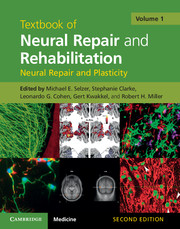108 results
Radiofrequency ice dielectric measurements at Summit Station, Greenland
-
- Journal:
- Journal of Glaciology , First View
- Published online by Cambridge University Press:
- 09 October 2023, pp. 1-12
-
- Article
-
- You have access
- Open access
- HTML
- Export citation
Monitoring to conservation: The science–policy nexus of plastics and seabirds
-
- Journal:
- Cambridge Prisms: Plastics / Volume 1 / 2023
- Published online by Cambridge University Press:
- 08 May 2023, e3
-
- Article
-
- You have access
- Open access
- HTML
- Export citation
Using polygenic scores and clinical data for bipolar disorder patient stratification and lithium response prediction: machine learning approach – CORRIGENDUM
-
- Journal:
- The British Journal of Psychiatry / Volume 221 / Issue 2 / August 2022
- Published online by Cambridge University Press:
- 04 May 2022, p. 494
- Print publication:
- August 2022
-
- Article
-
- You have access
- Open access
- HTML
- Export citation
Using polygenic scores and clinical data for bipolar disorder patient stratification and lithium response prediction: machine learning approach
-
- Journal:
- The British Journal of Psychiatry / Volume 220 / Issue 4 / April 2022
- Published online by Cambridge University Press:
- 28 February 2022, pp. 219-228
- Print publication:
- April 2022
-
- Article
-
- You have access
- Open access
- HTML
- Export citation
Catastrophic cognitions about coronavirus: the Oxford psychological investigation of coronavirus questionnaire [TOPIC-Q]
-
- Journal:
- Psychological Medicine / Volume 52 / Issue 15 / November 2022
- Published online by Cambridge University Press:
- 22 January 2021, pp. 3550-3559
-
- Article
-
- You have access
- Open access
- HTML
- Export citation
Integration of patient and clinician narratives into systematic reviews: An applied proof of concept
-
- Journal:
- Journal of Clinical and Translational Science / Volume 5 / Issue 1 / 2021
- Published online by Cambridge University Press:
- 19 January 2021, e78
-
- Article
-
- You have access
- Open access
- HTML
- Export citation
Perspectives of patients, carers and mental health staff on early warning signs of relapse in psychosis: a qualitative investigation
-
- Journal:
- BJPsych Open / Volume 6 / Issue 1 / January 2020
- Published online by Cambridge University Press:
- 12 December 2019, e3
-
- Article
-
- You have access
- Open access
- HTML
- Export citation
Ethnic inequalities in the use of secondary and tertiary mental health services among patients with obsessive–compulsive disorder
-
- Journal:
- The British Journal of Psychiatry / Volume 207 / Issue 6 / December 2015
- Published online by Cambridge University Press:
- 02 January 2018, pp. 530-535
- Print publication:
- December 2015
-
- Article
-
- You have access
- HTML
- Export citation
Contributors
-
-
- Book:
- Essential Clinical Anesthesia Review
- Published online:
- 05 February 2015
- Print publication:
- 08 January 2015, pp xi-xvi
-
- Chapter
- Export citation
Preface
-
- Book:
- Textbook of Neural Repair and Rehabilitation
- Published online:
- 05 May 2014
- Print publication:
- 24 April 2014, pp xvii-xvii
-
- Chapter
- Export citation

Textbook of Neural Repair and Rehabilitation
-
- Published online:
- 05 June 2014
- Print publication:
- 24 April 2014
Section 1 - Technology of neurorehabilitation: outcome measurement and diagnostic technology
-
- Book:
- Textbook of Neural Repair and Rehabilitation
- Published online:
- 05 June 2014
- Print publication:
- 24 April 2014, pp 1-94
-
- Chapter
- Export citation

Textbook of Neural Repair and Rehabilitation
-
- Published online:
- 05 May 2014
- Print publication:
- 24 April 2014
Textbook of Neural Repair and Rehabilitation - Half title page
-
- Book:
- Textbook of Neural Repair and Rehabilitation
- Published online:
- 05 May 2014
- Print publication:
- 24 April 2014, pp i-ii
-
- Chapter
- Export citation
Section 5 - Vegetative and autonomic dysfunctions
-
- Book:
- Textbook of Neural Repair and Rehabilitation
- Published online:
- 05 June 2014
- Print publication:
- 24 April 2014, pp 385-436
-
- Chapter
- Export citation
Index
-
- Book:
- Textbook of Neural Repair and Rehabilitation
- Published online:
- 05 May 2014
- Print publication:
- 24 April 2014, pp 609-643
-
- Chapter
- Export citation
Contributor affiliations
-
-
- Book:
- Textbook of Neural Repair and Rehabilitation
- Published online:
- 05 May 2014
- Print publication:
- 24 April 2014, pp ix-xvi
-
- Chapter
- Export citation
Section 7 - Translational research: application to human neural injury
-
- Book:
- Textbook of Neural Repair and Rehabilitation
- Published online:
- 05 May 2014
- Print publication:
- 24 April 2014, pp 541-608
-
- Chapter
- Export citation
Textbook of Neural Repair and Rehabilitation - Title page
-
-
- Book:
- Textbook of Neural Repair and Rehabilitation
- Published online:
- 05 May 2014
- Print publication:
- 24 April 2014, pp iii-iii
-
- Chapter
- Export citation
Index
-
- Book:
- Textbook of Neural Repair and Rehabilitation
- Published online:
- 05 June 2014
- Print publication:
- 24 April 2014, pp 674-708
-
- Chapter
- Export citation




